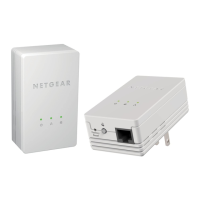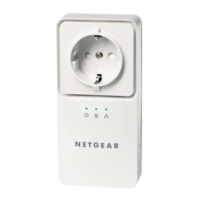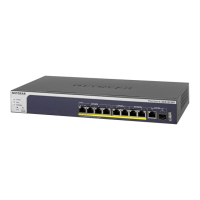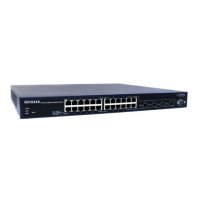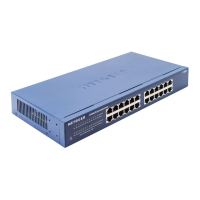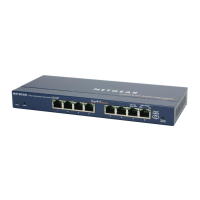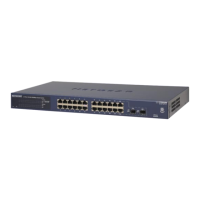Configure the hash mode for Auto-LAGs
By default, the Auto-LAG feature is enabled and uses the Layer 2; Destination mode,
which auto-configures a LAG based on the destination MAC address, VLAN, EtherType,
and incoming port in the packet. You can change the hash mode (that is, the load
balancing mode) for the Auto-LAG feature.
The switch balances traffic on a LAG by selecting one of the links in the channel over
which packets must be transmitted. The switch selects the link by creating a binary
pattern from selected fields in a packet and associating that pattern with a particular
link. The hash mode determines which fields in a packet the switch selects.
To change the hash mode for the Auto-LAGs:
1. Launch a web browser.
2.
In the address field of your web browser, enter the IP address of the switch.
The login page displays.
3.
In the Login Name field, enter admin as the user name, in the Password field, enter
your local device password, and click the AV UI Login button.
The first time that you log in, no password is required. However, you then must
specify a local device password to use each subsequent time that you log in.
The Overview page displays.
4.
Select Configure > Link Aggregation.
The Link Aggregation Group page displays.
5.
Below the graphical display of the switch, from the Auto-LAG Hash menu, select
the hash mode for the Auto-LAGs:
•
Layer 2; Source: Based on the source MAC address, VLAN, EtherType, and
incoming port associated with the packet.
•
Layer 2; Destination: Based on the destination MAC address, VLAN, EtherType,
and incoming port in the packet. This is the default mode.
•
Layer 2; Source + Destination: Based on the source and destination MAC
addresses, VLAN, EtherType, and incoming port in the packet.
•
Layer 3+4; Source: Based on the source IP address and source TCP or UDP port
field in the packet.
•
Layer 3+4; Destination: Based on the destination IP address and destination
TCP or UDP port field in the packet.
•
Layer 3+4; Source + Destination: Based on the source and destination IP
addresses and source and destination TCP or UDP port field in the packet.
Audio Video User Manual36Link Aggregation
AV Line of Fully Managed Switches M4250 Series
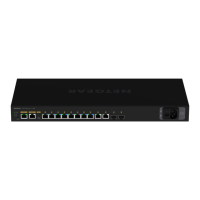
